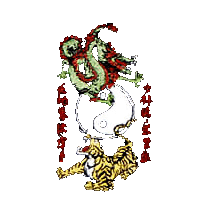|
Like many martial arts, Ten-Chi Kenpo can be broken down
into three levels of understanding: beginner, intermediate, and advanced. These levels follow the standard
ten promotions, to instructor. Or ten Kyu’s to Dan rank. A brief overview
of what is expected is provided below.
10th – 7th Kyu
The Beginning students of Ten-Chi Kenpo learn what many people think of when they think of Karate.
The training emphasizes deep stances, blocks, punches, kicks and Kata (forms).
The curriculum is drawn from Shotokan as
well as Kajukenbo. Students
learn the firm disciplines of these
traditional styles. “Train deep and fight higher” is often the mantra of an
aspiring student at this rank. Added to the forms (Kata) students are
also introduced to the concepts of range targeting and timing. This is done
through prearranged fighting forms or Kumite Kata. This allows a student
to begin to understand principals of contact.
6th - 4th Kyu
At this point in the training the scope of the training changes. As well as Kata and Kumite Kata,
students begin to learn Gote-waza (twisting techniques, or locks) Nage-waza (throws) and Goshen Jitsu
(self defense forms). At this level, the curriculum is drawn from Hakkoryu Jujitsu as
well as Kajukenbo. Now students work on the matts in order to
achieve a better understanding of how to adequately defend them selves against
an opponent. This broadening of understanding provides a very comprehensive
look at what self-defense truly is.
3rd - 1st Kyu
At the advanced level of training, Students are expected to continue to master their Gote-waza,
Nage-waza and Goshen Jitsu. Added to this is an exposure to the internal arts. A Yang
Style Long Form of 150 postures introduced at this level
of training. This is to complete the very meaning of the name of the art. Ten
Chi (hard and soft). The Tai Chi helps the student to learn to soften.
This subtlety give the full understanding of the system, and allows the student
to become all the more effective in defending oneself. First lean to be hard
then soft, finally blend the two together. During this stage of the training
the student is viewed as an assistant instructor. They may help to reinforce
technique as well as practice score on reviews.
Dan-rank
Shodan is Student Instructor. A Shodan may introduce technique and promote others to rank.
A Shodan may not bring someone to their own rank. That is the only restriction at this rank.
At this rank, one continues to reinforce the earlier training, as well as begin to learn the applications of
the Tai Chi, through a two-person form called the Ta Lu.
Nidan is Full Instructor. A Nidan may promote a student to Shodan.
Sandan is Senior Instructor. A Sandan may promote students to Nidan, creating Full Instructors.
Yondan is Apprentice Master.
Godan is Full Master.
Ryokudan is Master Instructor.
|
